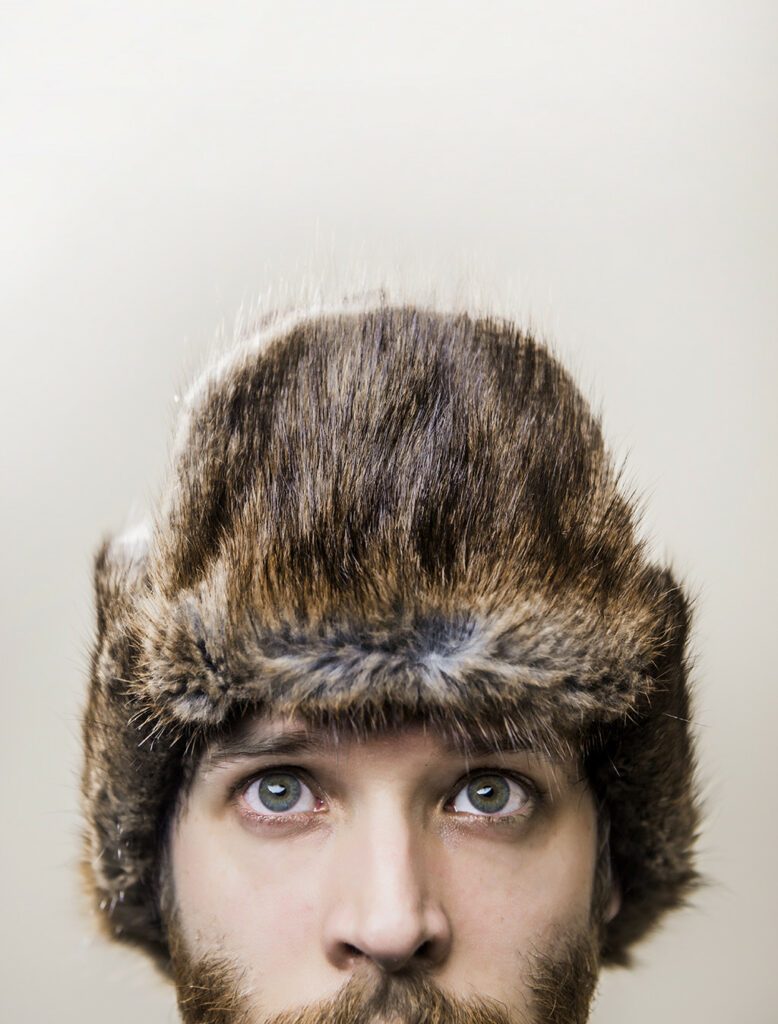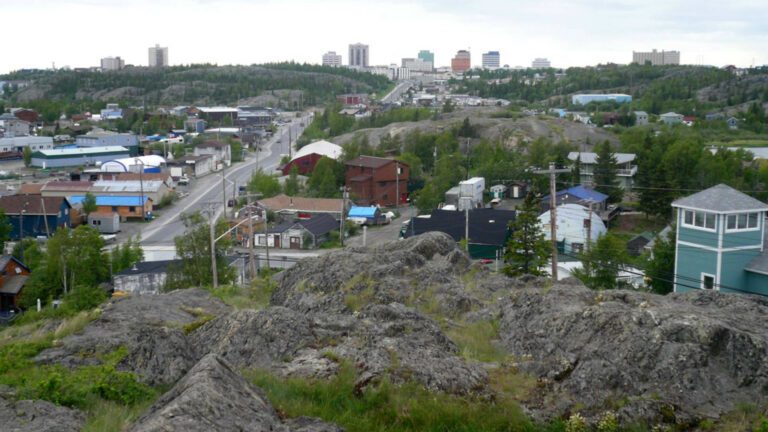The ritual was the same every morning; pull the ears of my muskrat hat down and tie them beneath my chin, flip up my parka hood, then lower the peak of my hat until the guard hairs brushed the bridge my nose.
Armored thus, I stepped into the witching hour. It was a recurring fantasy, never acted on, that wearing just the hat, I could walk from Latham Island to New Town without freezing anything. That’s how it warmed me, on those cold black mornings.
Known to military historians as the Klondike, the humble rat hat became the choice of Northwest Police officers keeping order in the Yukon during the gold rush. It went through several iterations until 1977 when the RCMP settled on specifications that called for a topper of muskrat and nylon constructed with five panels that give it a sharp profile.
The Klondike’s distinctive shape sets it apart from the Ushanka, a fur hat that has been commonly worn throughout Germany, Scandanavia, Russia and Asia for hundreds of years, and has a rounded shape that planes the corners from square heads.
A furry mob of Klondikes was on parade in Yellowknife on Remembrance Day, worn by ranks of police and armed forces personnel who were doubtless grateful that their hats had recently escaped extermination by the anti-fur lobby.
In its relentless campaign against everything warm and fuzzy worn to ward off the cold, the Association for the Protection of Furbearing Animals set its sights on the Klondike. It tallied the ranks of muskrats trapped for hats at 6,000 to 9,000 a year.
“Is this how you want your tax dollars used?” the association shrilled on its website. “Despite the fact that the majority of Canadians continue to oppose the use of real fur, the RCMP refuses to update their uniform. They are paying for this cruelty with your tax dollars, delivering profits to a shrinking fur market.
Government policy by sound bite
“Do you live in urban Canada? Then stop reading right now, because you’re not the audience for the little gem of government policy by sound bite. Live in rural Canada? Or the North? Read on. Because the policy that is our subject was focus-grouped just for you,” the diatribe continued.
“It assumes that you’ve got resentments that can be mined for political benefit. For example, it assumes that the term “animal rights” is a red flag for you, and that it will reflexively react favourably to whichever party stands reflexively against it.”
The association persuaded RCMP brass to replace the Klondike hats with wool toques – except in the North, where the familiar headgear was developed and adopted as a practical and stylish way to ward off ice cream headaches in the dead of winter.
“We have listened to the views of external interested parties and of our employees,” RCMP Corps Sgt. Major Darren Campbell wrote in a letter to the association last August. He promised a “significant reduction” in the number of fur hats and muskrat deaths.
Muskrat hats would still be used in extreme weather conditions, but wool toques would become the standard for most officers. But the animal rights people had not factored in Leona Aglukkaq, Harper’s Minister of the Environment, and staunch protector of the fur harvest.
The Nunavut MP gleefully told the House of Commons last month that “the RCMP decision, which is causing much glee among anti-fur activists, is being fully overturned. Our government will always stand up for Canada’s hunters and trappers.”
Association spokesman Michael Howie was outraged. “The RCMP made a decision based on facts, scientific testing and the collective attitudes of their members and the public,” Howie steamed, and accused the government of “trying to pander to a dwindling industry and disregarding the rest of the country’s views.”
There have been other attempts to tamper with the comforting practicality of the Klondike hat. The police tried horsehide, beaver, otter, red fox and even flirted briefly with something called Columbia Beaver – a synthetic product imported from Austria, but settled finally, on muskrat for all ranks.
Had the Association for the Protection of Furbearing Animals succeeded in banishing the Klondike hat, the victory would have been a minor one. According to the RCMP, it issues just 930 hats a year while trappers harvest more than 200,000 muskrats annually.
My hat waits in the drawer where it summers with gloves and scarves. Still lustrous after 20 years, the fur hides cracks that time and climate have opened in the hide, thin and brittle as parchment. A long barb from a barrel cactus keeps the peak in place, otherwise it’s just another muskrat hat. But I can’t bring myself to replace it.

The author in his rat hat. | photo courtesy Richard Gleeson







